#how to blow up a pipeline (2022)
Explore tagged Tumblr posts
Text


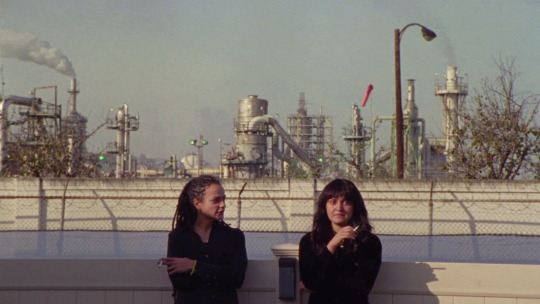



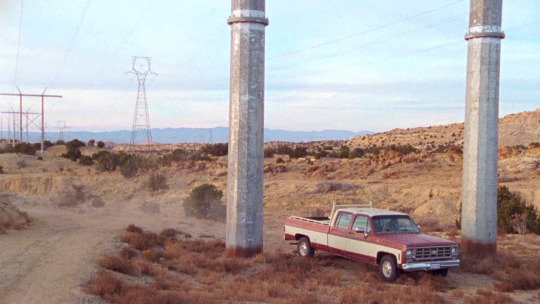
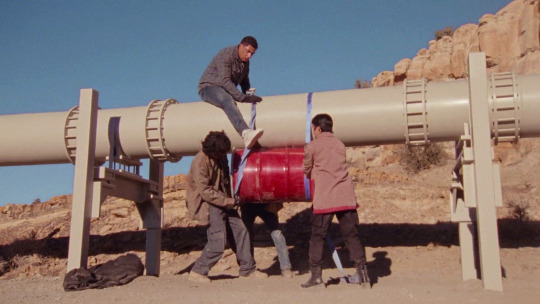


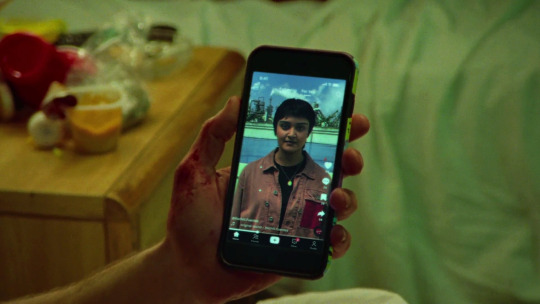
How to Blow Up a Pipeline (2022)
"We tried to combine these raw, gritty oil drum recordings with these distorted and pulsing synth sounds... This is the first time I’ve traveled to a set to sample and record actual oil drums, pipes, and found sounds to create a score... We had a drumstick with a super bouncy ball attached to the [oil drum], and we dragged it across the metal pipes to create ominous, resonate drones."
Gavin Brivik on producing the film's opening track 'Why I Destroyed Your Property'
#how to blow up a pipeline#how to blow up a pipeline 2022#daniel goldhaber#ariela barer#kristine froseth#lukas gage#forrest goodluck#sasha lane#jayme lawson#marcus scribner#jake weary#irene bedard#gavin brivik#2020s#2022#filmedit#film#cinema#movies
388 notes
·
View notes
Text
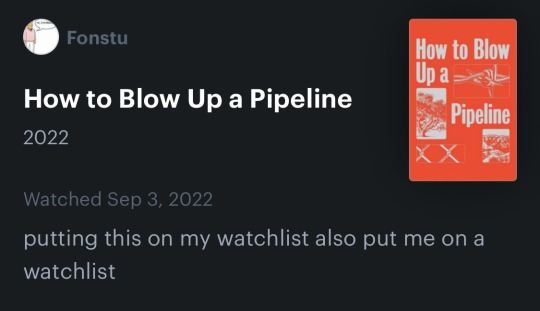
162 notes
·
View notes
Text



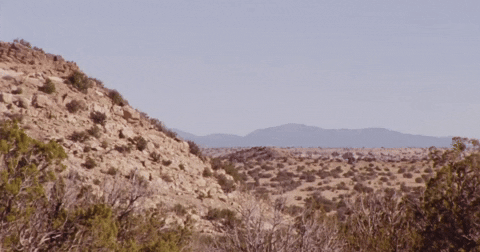


How to Blow Up a Pipeline (2022) dir: Daniel Goldhaber
12 notes
·
View notes
Text
I think anyone complaining about Bell's Hells morality as we near the end of Critical Role Campaign 3 and whether they truly get to claim they're representatives of the Exandrian people should go watch How To Blow Up A Pipeline (2022) about direct action environmental rights activists. And the documentary Hit & Stay (2013) about the anti-Vietnam War Catholic Far Left activists while you're at it. Or The Trial of the Catonsville Nine (1972) which is based on a play written by one of the priests profiled in Hit & Stay about their trial (grandstanding in the trial was one of the intents of being arrested).
It turns out that when you're not in a binary morality unquestioned heroism YA novel that what is justified in fighting systems of oppression and what the right thing to do is actually becomes hard to determine and largely driven by internal feelings and rage at injustice.
Who determines who gets to have a big say? Who determines what actions are justified when no one will listen to the harm being done? Who determines what is overall the more harmful action? Especially when you can't know the future except that there is no option where tremendous harm is not done. Who determines which step along any road is "right" or even "wise?" Especially when they are taken one by one by specific people who are swept up by the events of their own lives and not predetermined by an all-seeing all-knowing Author writing backwards from the ending?
Playing a game isn't the same as acting in the real world at great personal cost, but real life is a kind of improv. Long form improv doesn't start with how the ending should get tied up. It's about how every single split second decision adds up to a cumulative finale. Things not turning out how you'd have played them out if you already knew everything and were living someone else's life is what reality is like.
The normal state of affairs is people making decisions you don't agree with. "They shouldn't have done that" is boring and useless analysis that shuts down further thought and dismisses what anyone else has to say. "Why did they do that" is what media literacy is about. Campaign 3 was never heroic fantasy (arguably C1 & C2 weren't either). It's a character study in people doing what they feel they must in the moment it's happening without any assurances at all that it's the right thing. It's about not having confidence and surety but having to act anyway. That's the entire point.
How To Blow Up A Pipeline (2022) is a great expression of that same dynamic. They have enough confidence to keep telling each other this is the most necessary action they can take because they don't know what the future looks like, but one where they did nothing isn't one they can stand to live through. Is blowing up this pipeline in the way they are planning to the best possible course of action morally and strategically? Literally nobody knows that. They can't possibly know that. It only matters that these people got to that point, and now it's all happening flaws and all. For love, for revenge, for discord in the face of a society that acts like this is normal. A bunch of righteous fuckups just trying to survive in a harsh world made harsher by the status quo.
If nearly 437 hours of game play was too much to sit through to get that point across, maybe 104 minutes will work better.
#critical role#critical role spoilers#critical role discourse#critical role meta#critical role campaign 3#bell's hells#Predathos#ludinus da'leth#How to blow up a pipeline#how to blow up a pipeline (2022)#Hit & Stay#Hit & Stay (2013)#The Trial of the Catonsville Nine#The Trial of the Catonsville Nine (1972)#media analysis#media literacy
30 notes
·
View notes
Text

How to Blow Up a Pizza Hut

when the meme goes too far and now has a body count
#that's a joke based on the title of the 2022 film How to Blow Up a Pipeline where Pipeline is replaced with Pizza Hut#it should not be construed as intent of any action and is not such
35K notes
·
View notes
Text


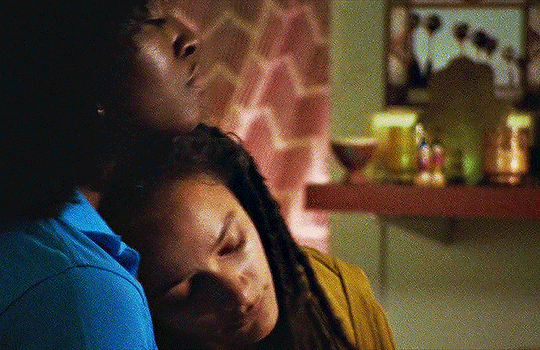

Jayme Lawson & Sasha Lane in How to Blow Up a Pipeline (2022)
#jayme lawson#sasha lane#how to blow up a pipeline#lgbtcinema#filmgifs#filmedit#dailyworldcinema#gifs#:)#wlw#dailyflicks
396 notes
·
View notes
Text
saw my list of black sapphic books to read this month, but don’t really read? i got you, here’s a list of black sapphic films (or films featuring black sapphics) to watch this black history month
documentaries:
stormé: lady of the jewel box (1991, dir. michelle parkerson)*
black/womyn: conversations with lesbians of african descent (2008, dir. tiona nekkia mcclodden)*
difficult love (2010, dir. zanele muholi & peter goldsmid)*
shakedown (2018, dir. leilah weinraub)*
drama:
the watermelon woman (1996, dir. cheryl dunye)*
pariah (2011, dir. dee rees)*
rafiki (2018, dir. wanuri kahiu)*
selah and the spades (2019, dir. tayarisha poe)*
valley of a thousand hills (2022, dir. bonie sithebe)*
tahara (2020, dir. olivia peace)
mars one (2022, dir. gabriel martins)
rom-com:
the incredibly true adventure of two girls in love (1995, dir. maria maggenti)
comedy:
d.e.b.s. (2004, dir. angela robinson)*
bottoms (2023, dir. emma seligman)
horror:
the mark of lilith (1986, dir. bruna fionda, polly gladwin, & isiling mack-nataf)
good manners (2017, dir. juliana rojas & marco dutra)
the perfection (2018, dir. richard shepherd)
jagged mind (2023, dir. kelley kali)*
bodies bodies bodies (2023, dir. halina reijn)
thriller:
set it off (1996, dir. f. gary gray)
the eiffel tower mystery (2016, dir. léa fazer)
how to blow up a pipeline (2022, dir. daniel goldhaber)
short films:
sunday’s child (2019, dir. maisie richardson-sellers)*
tender (2019, dir. felicia pride)*
ìfé (2020, dir. uyaiedu ipke-etim)*
the beginning & the middle (2021, dir. alexis g. zall)
heart shot (2022, dir. marielle woods)
grace (2024, dir. natalie jasmine harris)*
honorable mention: i saw the tv glow (2024, dir. jane schoenbrun), for what i felt was some undeniable implied sapphicism between the two main characters but was never actually explicitly canonized
additional info:
* indicates that the film listed was directed by a black woman/non-binary person
-> “why wasnt this film with black sapphics listed?” likely because the film doesn’t feature a black sapphic(s) as the main character. i tried to create a list of films that are least somewhat centric on black sapphics, no background characters or subplots
many of these films require trigger warnings, especially the dramas, horrors, and thrillers. please do your due diligence and search up warnings for yourself, as there are too many to list here. https://www.doesthedogdie.com is a good resource for this
feel free to add more to this post if you have more recs! happy black history month
#black history#queer history#dykeposting#black history month#black films#black cinema#black art#queer films#queer cinema#queer art#lesbian#lesbian pride#wlw#women loving women#wlw pride#sapphic#sapphic pride#queer#queer pride#queer women#lgbt women#lgbt film#films
140 notes
·
View notes
Text
The full list is quite long, so I didn't want to clutter up the last post with it---still, it is impressive to see them all laid out together. So without further ado!
THE 50 MOVIES AND 50ISH BOOKS I WATCHED/READ IN 2024
MOVIES
The Count of Monte Cristo (2024) Emilia Pérez (2024) Wicked (2024) American Psycho (2000) Heavy Trip (2018) La Planète sauvage / Fantastic Planet (1973) The Slipper and the Rose (1973) Bottoms (2023) I Saw the TV Glow (2024) *We’re All Going to the World’s Fair (2021) Oddity (2024) Maxxxine (2024) *The Substance (2024) *The Wicker Man (1973) Housebound (2014) Problemista (2023) Showing Up (2023) *Arsenic and Old Lace (1944) It Comes at Night (2017) The Boy and the Heron (2023) Abigail (2024) Seven Samurai (1954) The Iron Claw (2023) Talk to Me (2023) Bodies Bodies Bodies (2023) Rashomon (1950) *M (1931) Lord of Misrule (2023) The Tale of Princess Kaguya (2013) *Crimes of the Future (2022) Sanctuary (2022) After Yang (2022) **The Florida Project (2017) Pig (2021) The Favourite (2018) Poor Things (2023) Infinity Pool (2023) The Feast (2021) Office Space (1999) *Corsage (2022) Robots (2023) The Deer King (2021) Madame de… (1953) Orphée (1950) Master Gardener (2022) *Something in the Dirt (2022) Black Orpheus (1959) Priscilla (2023) How to Blow Up a Pipeline (2022) *The Lure (2015) To Wong Foo, Thanks for Everything! Julie Newmar (1995)
BOOKS
The Shambling Guide to New York City, Ghost Train to New Orleans, Mur Lafferty What Feasts At Night, T. Kingfisher *Bad Girls, Camila Sosa Villada Don't Fear the Reaper, Stephen Graham Jones *Vintner's Luck, Elizabeth Knox The Barrow Will Send What it May, Margaret Killjoy You Know How the Story Goes, Thomas Olde Heuvelt Bloodchild, Wild Seed, Octavia E. Butler The Angel of Indian Lake, Stephen Graham Jones The Default World, Naomi Kanakia Fantasyland, Mike Bockoven Something is Killing the Children, issues 1-15 The Night Eaters Book 1, Book 2, Marjorie Liu This Wretched Valley, Jenny Kiefer These Deathless Bones, Cassandra Khaw *Dead Inside, Chandler Morrison Mental Diplopia, Julianna Baggott A Human Stain, Kelly Robson The Shape of My Name, Nino Cipri Daughter of Necessity, Marie Brennan The Mist, Stephen King A Skinful of Shadows, Frances Hardinge The Chalk Man, C. J. Tudor *The Rehearsal, Eleanor Catton Come Closer, Sara Gran The Underwater Welder, Jeff Lemire Blink, Christopher Sebela Pulling the Wings Off Angels, KJ Parker Thirteen Ways to Kill Lulabelle Rock, Maud Woolf An Elderly Lady Is Up to No Good, Helene Tursten Thornhedge, T. Kingfisher HEX, Thomas Olde Heuvelt Midnight Rooms, Donyae Coles Aglaeca, Mohnfisch Dr. Limos Plays God, Stevie Barot Home by the Rotting Sea, Otava Heikkila Last Crane, Narsid Sacred Bodies, Ver No Trouble at All, Various Authors (short story collection) *Wylding Hall, Elizabeth Hand Glass House, Paul Jessup Agony's Lodestone, Laura Keating * Big Swiss, Jen Beagin House of Rot, Danger Slater Dreadful, Rebecca Rozakis *Diavola, Jennifer Thorne Lute, Jennifer Thorne Regrettably, I Am About To Cause Trouble, Amie McNee The Rules Upheld by No One, Amie McNee The Sacrifice, Rin Chupeco The Bog Wife, Kay Chronister The Unmothers, Leslie J. Anderson *The Eyes Are the Best Part, Monika Kim Paying for It, Chester Brown Snow, Ronald Malfi Midnight on Beacon Street, Emily Ruth Verona Haunt Sweet Home, Sarah Pinsker The Doll-Master, Joyce Carol Oates The Third Person, Emma Grove The Werewolf at Dusk, David Small It's Lonely At The Centre Of The Earth, Zoe Thorogood Mom's Cancer, Brian Fies Mary Astor's Purple Diary, Edward Sorel Impossible People, Julia Wertz Roaming, Jillian Tamaki
47 notes
·
View notes
Text
🔆 — FORREST GOODLUCK as michael in how to blow up a pipeline (2022)
click the source link or the icon above to be redirected to 66 gifs sized at 268x151px of native american actor of navajo, hidatsa, mandan, and tsimshian descent, forrest goodluck (1998) from their role as michael in how to blow up a pipeline (2022)! i made all these gifs from scratch so please, do not claim as your own/steal/redistribute. please reblog/like if you found this useful or use them! warnings: minor injury, chemicals, shaky camera
* please ask permission if you’d like to crop them for personal use.



#forrest goodluck gif pack#forrest goodluck gif hunt#gifpacknetwork#supportcontentcreators#gifsociety#userdevon#fcxdirectory#gifpacksgalore#gifpacksociety#rph#rpc#gifpackshq#forrest goodluck#native american fc
34 notes
·
View notes
Text
Story #1 - Trump just dropped another subtle but telling clue about who blew up the Nord Stream pipeline.
ZeroHedge—not CNN, not the Times—was the one bold enough to break the silence during a recent Oval Office press conference.
“Now that you’re president again, would you consider launching a formal investigation into what happened and who actually did it?” the reporter asked.
Trump didn’t flinch.
“Well, probably if I asked certain people, I’d be able to tell you without having to waste a lot of money on an investigation,” he said.
“But I think a lot of people know who blew it up.”
Trump’s clue that “If I asked certain people, I’d be able to tell you without having to waste a lot of money on an investigation” points to something that we are all thinking.
In February 2023, Pulitzer Prize-winning journalist Seymour Hersh published a report titled “How America Took Out the Nord Stream Pipeline” on his Substack.
In this article, Hersh alleges that the United States, with assistance from Norway, orchestrated the sabotage of the Nord Stream pipelines in September 2022.
The operation was reportedly ordered by President Joe Biden and coordinated by the CIA.
In an April 2023 interview with Tucker Carlson, Trump was asked directly, “Who blew up the Nord Stream pipeline?”
He replied, “I don’t want to get our country in trouble, so I won’t answer it. But I can tell you who it wasn’t — was Russia.”
In February 2024, when Tucker Carlson pressed Putin on this issue, Putin joked that Carlson blew up the Nord Stream pipeline.
Carlson said, “I was busy that day. I did not blow up Nord Stream. Thank you, though.”
“You personally may have an alibi, but the CIA has no such alibi,” Putin replied.
Watch as Maria expertly unpacks all these moments in the video below.
10 notes
·
View notes
Text

31 notes
·
View notes
Text
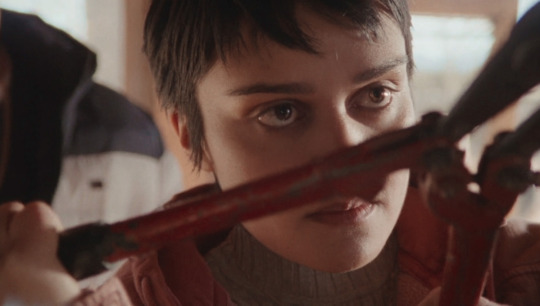
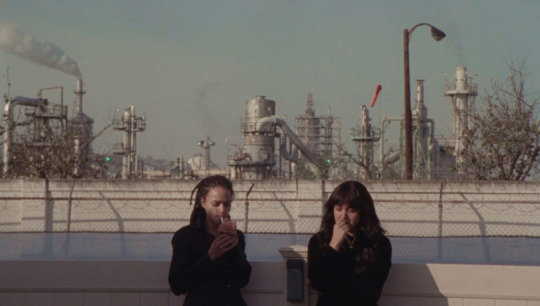
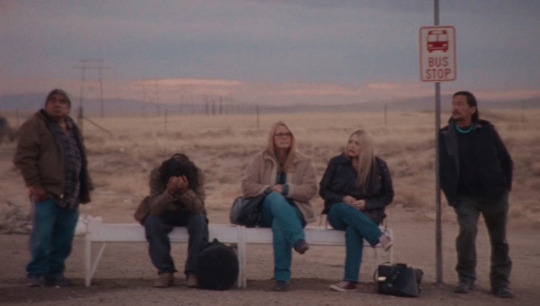
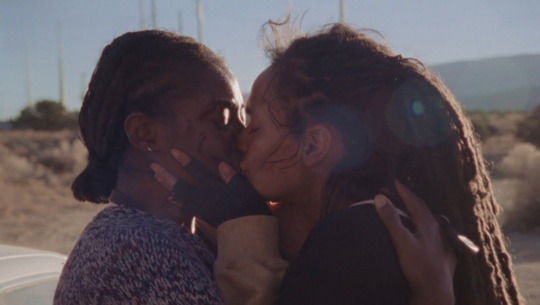
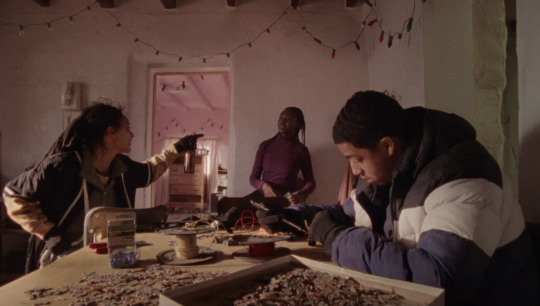
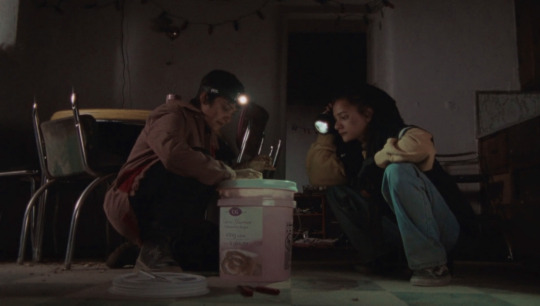
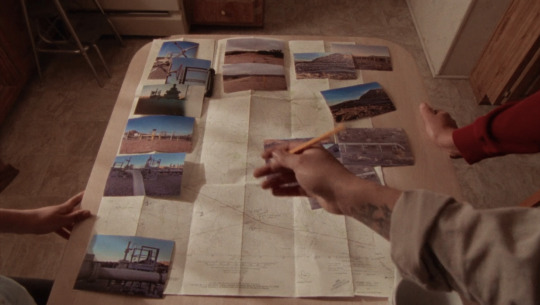
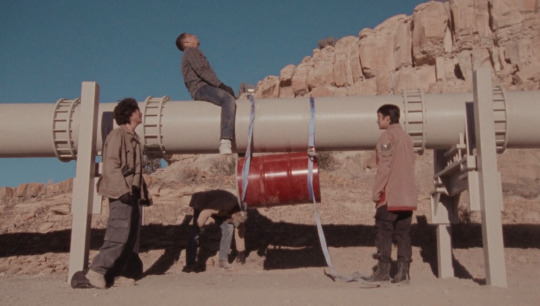
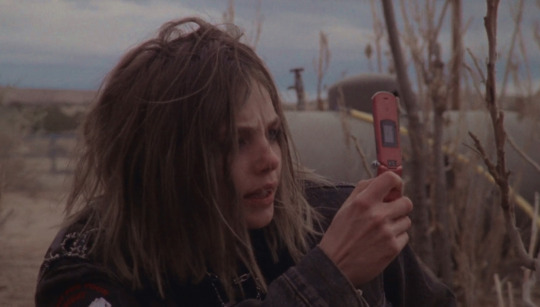

how to blow up a pipeline (2022) dir: daniel goldhaber
25 notes
·
View notes
Text
If you're loving the moral complexity of Critical Role Campaign 3, and enjoy Bell's Hells making agonized interesting character-driven choices that may not "right," here's a list of films I saw within the last few months to get more of that. (All of these ended up being at least a bit queer because queer people just make better films.)
Queer (2024)
My Own Private Idaho (1991)
Wicked: Part 1 (2024)
How To Blow Up A Pipeline (2022)
Hundreds of Beavers (2022)
I Saw The TV Glow (2024)
National Anthem (2023)
The Green Knight (2021)
The Grand Budapest Hotel (2014)
Carol (2015)
Elevator pitches under the cut.
Queer (2024)
Based on a 1985 novella by Beat Generation writer William S. Burroughs, it's a portrait of a middle-aged American gay writer named William Lee (played by Daniel Craig) living in Mexico City in the 1950s who becomes infatuated with a younger man named Eugene Allerton. He struggles with alcohol and heroin addiction, and is obsessed with telepathy. Eventually he invites Allerton with him to Ecuador seeking an experience with the hallucinogen yagé (ayahuasca), which little is known about outside local Indigenous medicine.
It's also about both of their very complex and painful experiences of queerness at a time when it was highly stigmatized and illegal. Including saying they reject the label as more of a political identity. The novella is loosely based on Burroughs own life and experiences. He's often excluded from the "queer canon" precisely because his relationship with homosexuality was too messy politically, despite being so open about it he's one of the Beat writers sued for obscenity that helped overturn those laws and allow every queer story after him to be published. (An astute viewer may note the symbolism of main characters refusing the label of queer in a work that explicitly labels them as queer as told by a "queer but it's complicated" author known for his semi-autobiographical work with unreliable narrators.)
My Own Private Idaho (1991)
A loose adaptation of Shakespeare's Henry IV from the perspective of Ned Poins. It moves the action to early 1990s Portland, Oregon where Ned becomes Mike Waters, a gay survival sex worker with narcolepsy trying to get by in a cruel and ableist world with a little help from his fellow hustler and degenerate friends. They live in an abandoned building with the newly returned king of the nest Bob Pigeon. With a little drug use and mugging to pass the time.
His best friend and crush is Scott Favor, a rebellious mayor's son who aims to disappoint so that his "miraculous" change into a redeemed son upon his father's death will finally earn his family's admiration. They travel together to Idaho and then Italy on a quest for Mike's estranged mother.
Genuinely some of the best bits of gay, sex worker, and disability in the 1990s. A really great look at how marginalization can be intersectional and the people ground under the heels of the powerful in the class war. When the Shakespeare really shines through it hits with the forceful immortality of the human condition as he saw it long ago.
Wicked: Part 1 (2024)
Based on both the book and musical Wicked. It tells the story of how the much-ostracized and green-skinned Elphaba came to be the Wicked Witch of the West in the Wizard of Oz. The film is in deep dialogue with how people are marginalized and made scapegoats in our current world in order to maintain the power of its rulers.
As told by Glinda The Good, her former roommate homoerotic frenemy who she was in a nebulous polyamorous triad or love triangle with (even they don't know which).
Also if Paul Tazewel doesn't win every award possible for his costume designs it will be biggest robbery since the British Museum. Look at this fucking spiral quilted vest that was worn in one scene near the beginning in low light while close-up dancing and seen basically only from the back to avoid identifying the wearer. Look at Elphaba's gorgeous goddamn dress on a green dress form so the could get the colors through the sheer gathered chiffon just right! These are some of the most gorgeous pieces of clothing ever made and required the technical precision of rocket scientists to make. 140 costumers worked on this film in the same building so they could build off each other's creativity. Even if it wasn't the best musical to be made in decades with technicolor enthusiasm and masterful film-making matching The Wizard of Oz (1939), it would be worth it just to see all the costumes. The Met Gala wishes it had costumes as good as the background actors.
How To Blow Up A Pipeline (2022)
A group of young environmental activists deeply harmed by the oil and gas industry (through land theft, climate change, and environmental poisoning) decide to take direct action by blowing up a pipeline in West Texas to drive up prices. Brought together by anger, love, righteousness, and chance, they set out to teach themselves to build a bomb to save the world from powerful capitalist overlords.
It's got the framework of a heist action film going between the main events and flashbacks showing what radicalized them. Incredibly powerful story about what's right and wrong in the face of a dire climate crisis driven by class war, racism, and greed.
Hundreds of Beavers (2022)
A no-dialogue black and white slapstick comedy about a 19th century Canadian applejack (alcohol) salesman who becomes a fur trapper for survival after beavers ruin his business. After many Wile E. Coyote like attempts to hunt rabbits for food, he befriends an expert trapper. Like The Legend of Zelda: Tears of the Kingdom, he slowly learns to string all his bad ideas into Rube Goldberg type contraptions to succeed in his hunts and goes to war with the beavers for the love of a girl. All the animals are wearing literal mascot costumes. Mix of live action, 2-D animation, practical effects, and light CGI. It's the Who Framed Rodger Rabbit (1988) of our time.
One of the funniest movies I've ever seen. If you've ever wondered what would happen if you combined Charlie Chaplin, silly Japanese game shows, Loony Toons, and Mario Kart, look no further! It wears a hundred media influences proudly on its sleeve while also being one of the most original films of all time.
I Saw The TV Glow (2024)
Alienated and isolated teenage Owen is introduced to the cheesy 1990s late-night kids show The Pink Opaque by his classmate Maddy, and he becomes obsessed with it. He especially connects to the female main character in ways he can't express.
When Maddy tells him she's running away to escape her abusive stepfather, Owen refuses the call to go with her. The film checked in on him at two other points into adulthood as he's locked into the gravity well of denying his inner self.
This is a tragic psychedelic horror film about how psychologically deep the closet can go for trans people, even to themselves. (The clear subtext is that Owen is trans woman, but I use he/him pronouns because his inability to face that fact, let alone rethink his pronouns, is the fundamental dread of the film.) A perfect example of why horror can be such a deep cathartic scream for marginalized creators. Nothing's ever come close to describing how soul-crushing it is to commit to pretending you're cis.
National Anthem (2023)
21-year-old Dylan is adrift in life working construction jobs in rural New Mexico. In this way he comes to work at a queer rodeo ranch. He didn't know such a thing existed and has never really had contact with any queer community. There he meets Sky, the most beautiful women he's ever seen in his life, who's a trans barrel racer.
She draws him into the commune polycule and introduces him to parts of his heart, gender, and sexuality that he never knew existed. Their love is tested against the fierce storms of family (natal + found), nature, and identity.
Absolutely breathtaking film about a queer subculture many people are unaware even exists. Wonderful to see films about confident trans women played by trans women. If you're a fan of Anthony Hurd's paintings, you must see this film.
The Green Knight (2021)
A masterful modern psychedelic adaptation of the famous Medieval poem. On Christmas Day the Green Knight visits King Arthur's court and proposes a game: a contestant may use his great axe to land one blow on him. However light or powerful, it will be returned onto that person in one year's time. King Arthur's headstrong nephew, and aspiring knight, Gawain takes up the challenge and cuts off his head. When it's done, the slain Green knight picks up his head and tells Gawain that for his honor must seek the Green Knight out for the return blow in one year.
We follow Sir Gawain's journey the next year to confront his duty, his honor, and his fate as various trials beset him. What awaits Gawain in his heart is heavier than any weapon. All using strong metaphor and red-green colors to get at the emotional and philosophical heart of this timeless tale of man's dominion vs. nature's. A literary symbolism bonanza.
The Grand Budapest Hotel (2014)
Zero Moustafa is a lobby boy in a famed European hotel in 1932. He's an illegal refugee fleeing a violent government. The hotel's flamboyant concierge, Monsieur Gustave H.. is known far and wide for impeccable service and among the hotel staff for his affairs with wealthy old clients. Gustave ends up taking Zero under his wing making him his protégé.
One of of Gustave's affairs spanned nearly two decades with the dowager Madame Céline Villeneuve Desgoffe-und-Taxis. When she mysteriously dies, it sends Zero and Gustave on a caper for a stolen painting, a family fortune, and Zero's affections for a clever girl, as fascism closes in around them.
Carol (2015)
This is the "Harold, they're lesbians" film. In the Christmas season of 1952, a young clerk and aspiring photographer named Therese Belivet is noticed by a gorgeous older women named Carol Aird who is looking for a gift for her beloved little girl. Carol is trying to divorce her abusive husband (who's only grown more possessive and controlling after discovering her homosexuality). Meanwhile Therese's boyfriend Richard is trying to convince her to come away with him to France and get married.
Carol slowly draws Therese into her first lesbian love affair, and helps her develop and thrive. But as the stakes of the divorce are raised and their relationship gets increasingly complicated, they must choose between the risks of their truth or the gilded cage of straightness.
#Queer media#queer films#critical role#critical role campaign 3#Queer (2024)#My Own Private Idaho (1991)#Wicked: Part 1 (2024)#How To Blow Up A Pipeline (2022)#Hundreds of Beavers (2022)#I Saw The TV Glow (2024)#National Anthem (2023)#The Green Knight (2021)#The Grand Budapest Hotel (2014)#Carol (2015)#long post
12 notes
·
View notes
Note
2, 6, 11, 19
2. What was your favorite movie of the ones you watched this year?
I watched some really, really excellent movies this year but - if I had to choose from the line-up, I think Kissed (1996) changed and validated my personhood in a way few movies ever have.
6. What genre did you watch the most the year?
horror, in no small part because @devilbearingtrouble and I watched 24 of them together over the year + I participated in hooptober.
11. Recommend any movie you watched this year.
The Remarkable Life of Ibelin (2024), it's a documentary about a disabled man's online life on WoW and the ripple effect it had on his friends and family. the majority of the documentary is animated in the WoW style and it's one of those movies that makes it really hard not to cry.
19. Are there any movies you're looking forward to next year? This can be new releases, or movies you just plan on watching for the first time.
I just made my '25 watchlist! I think the movies I most look forward to seeing next year are:
the color of money (1986), the wolf house (2018), how to blow up a pipeline (2022), mad god (2021), hellbender (2021), private parts (1972), and the baby (1973)
there aren't any new releases I'm looking forward to outside of the eventual release of the third spiderverse movie.
#mailbox#ask game#great questions. I LOVE gabbing about movies#also I am not rec'ing kissed (1996) unless you can stomach the summary. it was just my favorite thing I've seen this year lol
6 notes
·
View notes
Text
Shira Fishbach, a newly graduated physician, was sitting in an orientation session for her first year of medical residency when her phone started blowing up. It was June 24, 2022, and the US Supreme Court had just handed down its decision in Dobbs v. Jackson Women's Health Organization, nullifying the national right to abortion and turning control back to state governments.
Fishbach was in Michigan, where an abortion ban enacted in 1931 instantly came into effect. That law made administering an abortion a felony punishable by four years in prison, with no exceptions for rape or incest. It was a chilling moment: Her residency is in obstetrics and gynecology, and she viewed mastering abortion procedures as essential to her training.
“I suspected during my application cycle that this could happen, and to receive confirmation of it was devastating,” she recalls. “But I had strategically applied where I thought that, even if I didn't receive the full spectrum, I would at least have the support and the resources to get myself to an institution that would train me.”
Her mind whirled through the possibilities. Would her program help its residents go to an access-protecting state? Could she broker an agreement to go somewhere on her own, arranging weeks of extra housing and obtaining a local medical license and insurance? Would she still earn her salary if she left her program—and how would she fund her life if she did not?
In the end, she didn’t need to leave. That November, Michigan voters approved an amendment to the state constitution that made the 1931 law unenforceable, and this April, Governor Gretchen Whitmer repealed the ban. Fishbach didn’t have to abandon the state to learn the full range of ob-gyn care. In fact, her program at the University of Michigan, where she’s now a second-year resident, pivoted to making room for red-state trainees.
But the dizzying reassessment she underwent a year ago provides a glimpse of the challenges that face thousands of new and potential doctors. Almost 45 percent of the 286 accredited ob-gyn programs in the US now operate under revived or new abortion bans, meaning that more than 2,000 residents per year—trainee doctors who have committed to the specialty—may not receive the required training to be licensed. Among students and residents, simmering anger over bans is growing. Long-time faculty fear the result will be a permanent reshaping of American medicine, driving new doctors from red states to escape limitations and legal threats, or to protect their own reproductive options. That would reduce the number of physicians available, not just to provide abortions, but to conduct genetic screenings, care for miscarriages, deliver babies, and handle unpredictable pregnancy risks.
“I worry that we’re going to see an increase in maternal morbidity, differentially, depending on where you live,” says Kate Shaw, a physician and associate chair of ob-gyn education at Stanford Medicine. “And that’s just going to further enhance disparities that already exist.”
Those effects are not yet visible. The pipeline that ushers medical graduates through physician training is about a decade long: four years of school plus three to seven years of residency, sometimes with a two-year, sub-specialty fellowship afterward. Thus actions taken in response to the Dobbs decision—people eschewing red-state schools or choosing to settle in blue states long-term—might take a while to be noticeable.
But in this year, some data has emerged that suggests trends to come. In February, a group of students, residents and faculty surveyed 2,063 licensed and trainee physicians and found that 82 percent want to work or train in states that retain abortion access—and 76 percent would refuse to apply in states that restrict it. (The respondents worked in a mix of specialties; for those whose work would include performing abortions, the proportion intending to work where it remains legal soared above 99 percent.)
Then in April, a study from the Association of American Medical Colleges drawing on the first round of applications to residency programs after Dobbs found that ob-gyn applications in states with abortion restrictions sank by 10 percent compared to the previous year. Applications to all ob-gyn programs dropped by 5 percent. (Nationwide, all applications to residency went down 2 percent from 2021 to 2022.)
Last month, two preliminary pieces of research presented at the annual meeting of the American College of Obstetricians and Gynecologists uncovered more perturbations. In Texas—where the restrictive law SB8 went into effect in September 2021, nine months before Dobbs—a multi-year upward trend in applications to ob-gyn residency slowed after the law passed. And in an unrelated national survey, 77 percent of 494 third- and fourth-year medical students said that abortion restrictions would affect where they applied to residency, while 58 percent said they were unlikely to apply to states with a ban.
That last survey was conducted by Ariana Traub and Kellen “Nell” Mermin-Bunnell, two third-year medical students at Emory University School of Medicine in Atlanta—which lies within a state with a “fetal heartbeat” law that predates Dobbs and that criminalizes providing an abortion after six weeks of pregnancy. The law means that students in clinical rotations are unlikely to witness abortions and would not be allowed to discuss the procedure with patients. It also means that, if either of them were to become pregnant while at med school, they would not have that option themselves.
Before they published the survey, the two friends conducted an analysis of how bans would affect medical school curricula, using data collected in the summer of 2022. They predicted that only 29 percent of the more than 129,000 medical students in the US would not be affected by state bans. The survey gave them a chance to sample med students’ feelings about those developments, with the help of faculty members. They also founded a nonprofit, Georgia Healthcare Professionals for Reproductive Justice. “We're in a unique position, as individuals in the health care field but not necessarily medical professionals yet,” Traub says. “We have some freedom. So we felt like we had to use that power to try to make change.”
Ob-gyn formation is caught between opposing forces. Just over half of US states have passed bans or limitations on abortion that go beyond the Roe v. Wade standard of fetal viability. But the Accreditation Council for Graduate Medical Education, a nonprofit that sets standards for residency and fellowship programs, has always required that obstetric trainees learn to do abortions, unless they opt out for religious or moral reasons. It reaffirmed that requirement after the Dobbs decision. Failure to provide that training could cause a program to lose accreditation, leaving its graduates ineligible to be licensed.
The conflict between what medicine demands and state laws prevent leaves new and would-be doctors in restrictive states struggling with their inability to follow medical evidence and their own best intentions. “I’m starting to take care of patients for the first time in my life,” says Mermin-Bunnell, Traub’s survey partner. “Seeing a human being in front of you, who needs your help, and not being able to help them or even talk to them about what their options might be—it feels morally wrong.”
That frustration is equally evident among trainees in specialties who might treat a pregnant person, prescribe treatments that could imperil a pregnancy, or care for a pregnancy gone wrong. Those include family and adolescent medicine, anesthesiology, radiology, rheumatology, even dermatology and mental health.
“I’m particularly interested in oncology, and I’ve come to realize that you can’t have the full standard of gynecologic oncology care without being able to have access to abortion care,” says Morgan Levy, a fourth-year medical student in Florida who plans to apply to ob-gyn residency. Florida currently bans abortion after 15 weeks; a further ban, down to six weeks, passed in April but has been held up by legal challenges. In three years of med school so far, Levy received one lecture on abortion—in the context of miscarriage—and no clinical exposure to the procedure. “It is a priority for me to make sure that I get trained,” she says.
But landing in a training program that encourages abortion practice is more difficult than it looks. Residency application is an algorithm-driven process in which graduates list their preferred programs, and faculty rank the trainees they want to teach. For years, there have been more applicants than there are spaces—and this year, as in the past, ob-gyn programs filled almost all their slots. What that means, according to faculty members, is that some applicants will end up where they do not want to be.
“Students and trainees do exert their preferences, but they also need to get a training spot,” says Vineet Arora, the dean for medical education at the University of Chicago Pritzker School of Medicine and lead author on the survey published in February. “Would they forgo a training spot because of Dobbs? That's a tall order, especially in a competitive field. But would they be happy about it? And would they want to stay there long term?”
That is not a hypothetical question. According to the medical-colleges association, more than half of residents stay to practice in the states where they trained. But it’s reasonable to ask whether they would feel that loyalty if they were deprived of training or forced to relocate. “If even a portion of the 80 percent of people who prefer to practice and train in states that don't have abortion bans follow through on those preferences, those states that are putting in abortion bans—which often have workforce shortages already—will be in a worse situation,” Arora says.
An ACOG analysis estimated in 2017 that half of US counties, which are home to 10 million women, have no practicing ob-gyn. When the health care tech firm Doximity examined ob-gyn workloads in 2019, seven of the 10 cities it identified as having the highest workloads lie in what are now very restrictive states. Those shortages are likely to worsen if new doctors relocate to states where they feel safe. The legal and consulting firm Manatt Health predicted in a white paper last fall: “The impact on access to all OB/GYN care in certain geographies could be catastrophic.”
Faculty are struggling to solve the mismatch between licensing requirements and state prohibitions by identifying other ways residents can train. They view it as protecting the integrity of medical practice. “Any ob-gyn has to be able to empty the uterus in an emergency, for abortion, for miscarriage, and for pregnancy complications or significant medical problems,” says Jody Steinauer, who is vice-chair of ob-gyn education at UC San Francisco.
Steinauer directs the Kenneth J. Ryan Residency Training Program, a 24-year-old effort to install and reinforce clinical abortion training. Even before Dobbs, that was hard to come by: In 2018, Steinauer and colleagues estimated that only two-thirds of ob-gyn residency programs made it routine, despite accreditation requirements—and that anywhere from 29 to 78 percent of residents couldn’t competently perform different types of abortion when they left training. In 2020, researchers from UCSF and UC Berkeley documented that 57 percent of these programs face limitations set by individual hospitals more extreme than those set by states.
Before Dobbs, the Ryan program brokered individual relocations that let trainees temporarily transfer to other institutions. Now it is working to set up program-to-program agreements instead, because the logistics required to visit for a rotation—the kind of arrangements Fishbach dizzily imagined a year ago—are more complex than most people can manage on their own. And not only on the visiting trainee: Programs already perform delicate calculations of how many trainees they can take given the number of patients coming to their institutions and the number of faculty mentors.
Only a few places have managed to institutionalize “away rotations,” in which they align accreditation milestones, training time, and financing with other institutions. Oregon Health & Science University’s School of Medicine is about to open a formal program that will accept 10 to 12 residents from restrictive states for a month each over a year. Oregon imposes no restrictions on abortion, and both the med school’s existing residents and the university’s philanthropic foundation supported the move.
“I'm very concerned about having a future generation that knows how to provide safe abortion care—because abortion will never go away; becoming illegal only makes it less safe,” says Alyssa Colwill, who oversees the new program and is an assistant professor of obstetrics and gynecology. “There are going to be patients that are going to use unsafe methods because there's no other alternative. And providers are going to be placed in scenarios that are heartbreaking, and are devastating to watch.”
The accreditation council now requires programs that cannot train their own residents in abortion to support them in traveling somewhere else. But even at schools that are trying to accommodate as many learners as possible, trainees can attend for only a month—the maximum that fully enrolled programs in safe states can afford. After that, they must go back home, leaving them less-trained than their counterparts. As faculty look forward, they fear a slow spiral of decay in obstetric knowledge.
This isn’t imaginary: Already, research has shown that physicians practicing in red states are less likely to offer appropriate and legal procedures to treat miscarriages. Receiving abortion training, in other words, also improves medical care for pregnancy loss.
“Ultimately, I do not think there is capacity to train every resident who wants training,” says Charisse Loder, a clinical assistant professor of ob-gyn at the University of Michigan Medical School, who directs the program where Fishbach is training. “So we will have ob-gyn residents who are not trained in this care. And I think that is not only unfortunate, but puts patients in a position of being cared for by residents who don't have comprehensive training.”
Doing only short rotations also returns residents to places where their own reproductive health could be put at risk. Future physicians are likely to be older than in previous generations, having been encouraged to get life experience and sample other careers before entering med school. Research on which Levy and Arora collaborated in 2022 shows that more than 11 percent of new physicians had abortions during their training. Because of the length of training, they also may be more likely to use IVF when they are ready to start families—and some reproductive technologies may be criminalized under current abortion bans.
As a fourth and final-year psychiatry resident, Simone Bernstein had thought about abortion restrictions through the lens of her patients’ mental health, as she talked to them about fertility treatment and pregnancy loss. As cofounder of the online platform Inside the Match, she had listened to residents’ reactions to Dobbs (and collaborated on research with Levy and Arora). She had not expected the decision to affect her personally—but she is in Missouri, a state where there is an almost complete ban on abortion. And this spring, she experienced a miscarriage at 13 weeks of pregnancy.
“I was worried whether or not I could even go to the hospital, if my baby still had a heartbeat, which was a conversation that I had to have with my ob-gyn on the phone,” she says. “It didn’t come to that; I caught the baby in my hands at home, hemorrhaging blood everywhere, and the baby had already passed away. But until that moment, I didn't recognize the effects that [abortion restrictions] could have on me.”
This is the reality now: There exist very few places in the US where abortion is uncomplicated. Faculty and their trainees do not expect that to change, except for the worse. Staying in the field, and making sure the next generation is prepared, requires commitment that they will have to sustain for years.
“Part of the reason why I sought advanced training in abortion and contraception is because I think there will be a national ban,” says Abigail Liberty, an ob-gyn and fellow in her sixth postgraduate year at OHSU. “I think it will happen in our lifetime. And I see my role as getting as much expertise and training as I can now and providing care while I can. And then coming out of retirement, when abortion will be legal again, and training the next generation of physicians.”
49 notes
·
View notes
Text

Footnotes, 51-85
[51] Smith J and Moncourt A. 2009. The Red Army Faction, a Documentary History: Volume 1: Projectiles for the People. Oakland: PM Press.
[52] Ervin LK. 2021 [1988]. Anarchism and the Black revolution. London: Pluto.
[53] Berger D. 2006. Outlaws of America: The weather underground and the politics of solidarity. Oakland: AK Press.
[54] Carr G. 2008. Angry Brigade: A History of Britain's First Urban Guerilla Group. Oakland: PM Press.
[55] Burton-Rose D. 2010 Guerrilla USA: The George Jackson Brigade and the Antiapitalist Underground of the 1970s. Guerrilla USA. Berkeley: University of California Press.
[56] Hansen A. 2002. Direct action: Memoirs of an urban guerrilla. Oakland: Ak Press.
[57] Bonanno AM. 1998 [1977]. Armed Joy. Elephant Editions.
[58] Malm A. 2021. How to blow up a pipeline. Verso Books, pp. 154-55.
[59] Look at https://actforfree.noblogs.org/; https://warriorup.noblogs.org/; https://noticiasdelaguerrasocial.wordpress.com/; https://disordine.noblogs.org/; https://darknights.noblogs.org/; https://buscandolakalle.wordpress.com/; https://crimethinc.com/; https://enoughisenough14.org/; and so many more.
[60] Anonymous. 2015. "Since the Bristol Riots:" Communiques from the FAI, ELF & Other Attacks 2011-2014. Person(s) Unkown/Dark Matter Publications, Available at: https://personsunknown.noblogs.org/files/2014/11/Since-the-Bristol-riots-v2.pdf.
[61] Rodríguez G. 2013. ¡Que se ilumine la noche! Génesis, desarrollo y auge dela Tendencia Informal Anarquista en México. Santiago, Chile: Internacional Negra ediciones & Anonymous. 2014. Mauricio Morales: Let's Turn the City to Ashes. London: Elephant Editions.
[62] Malm, Andreas. 2019. “It Is Time to Try out an ‘Ecological Leninism’ – Interview with Andreas Malm.” 2019. https://www.versobooks.com/en-gb/blogs/news/4450-it-is-time-to-try-out-an-ecological-leninism-interview-with-andreas-malm?_pos=10&_sid=a10a72a65&_ss=r.
[63] Ibid, p. 153. See also: Tsolkas P. (2015) No System but the Ecosysem: Earth First! and Anarchism. Anarchist Studies.org, Available at: https://theanarchistlibrary.org/library/panagioti-tsolkas-no-system-but-the-ecosystem-earth-first-and-anarchism.
[64] See the editorial introduction for an assessment of deep ecology: Dunlap A, Søyland LH and Shokrgozar S. 2021. Debates in Post-Development and Degrowth: Volume 1. Oslo: Tvergastein.
[65] Aravind S. 2021. How to write about pipelines. Progress in Political Economy Blog, Available at: https://www.ppesydney.net/how-to-write-about-pipelines/; Kuhn G. 2021. Ecological Leninism: Friend or Foe? Kersplebedeb, Available at: https://kersplebedeb.com/posts/ecological-leninism-friend-or-foe/; & Klokkeblomst. 2021. Green Desperation Fuels Red Fascism: Andreas Malm’s Authoritarian Leftist Agenda. Return Fire, Available at: https://usa.anarchistlibraries.net/library/klokkeblomst-green-desperation-fuels-red-fascism-return-fire.
[66] Verso. 2022. Property Will Cost Us the Earth.
[67] Lenin’s relationships with the peasantry, as is well known, was tenuous to say the least (see Friends of Aron Baron, 2017), but Marxian thought tended to have a disparaging perspective. Take, for example, Eric Hobsbawm (1971/1959, pp. 82–83): “If this programme bore the Bakuninist label, it was because no political movement has reflected the spontaneous aspirations of backward peasants more sensitively and accurately in modern times than Bakuninism, which deliberately subordinated itself to them. Moreover, Spanish anarchism, more than any other political movement of our period, was almost exclusively elaborated and spread by peasants and small craftsmen.” See also Chapter 4 of Peter Linebaugh (2014) Stop, thief!: The commons, enclosures, and resistance (Oakland: PM Press).
[68] Ferretti F. (2018) Revolutions and their places: the anarchist geographers and the problem of nationalities in the Age of Empire (1875-1914)”. In: Ferretti F, Torre GBdl, Ince A, et al. (eds) Historical geographies of anarchism-Early critical geographers and present-day scientific challenges. Abingdon: Routldege, 113-128 & Maldonado B. (2012) Magonismo y vida comunal mesoamericana: a 90 años de la muerte de Ricardo Flores Magón, Oaxaca: CSEIIO.
[69] Ex-urban guerrilla Anne Hansen discusses anarchist and communist relationships with Indigenous people and solidarity networks in the 1970s in their recent interview with Submedia.tv in Transmissions Part I: Origins, available here: https://sub.media/transmissions-part-one-origins/. Moreover, Hansen (2002) mentions this in passing in Direct action: Memoirs of an urban guerrilla (Oakland: Ak Press). In a recent interview dialogue Gordon Hill and Allan Antliff discuss the various Indigneous and anarchist connections, solidarites and action report magazines in North America, see here: Hill G and Antliff A. 2021. Indigeneity, Sovereignty, Anarchy: A dialog with many voices. Anarchist Developments in Cultural Studies 7(1): 99-118.
[70] Anonymous. 2022. “Between Storms: Anarchist Reflections of Solidarity with Wet’suwet’en Resistance.” Online: Montreal Contre-Information. 2022. https://actforfree.noblogs.org/post/2022/11/20/between-storms-anarchist-reflections-of-solidarity-with-wetsuweten-resistance/.
[71] For more details and references see: Dunlap A. 2021. Toward an Anarchist Decolonization: A Few Notes. Capitalism Nature Socialism: 1-11 & Dunlap A. 2022. ‘I don’t want your progress! It tries to kill… me!’ Decolonial encounters and the anarchist critique of civilization. Globalizations: 1-27.
[72] IGD. 2021. This Is America #152: Sleydo’ on Indigenous Resistance to Coastal Gaslink. It's Going Down (IGD), Available at: https://itsgoingdown.org/this-is-america-152/.
[73] Submedia. 2021. The Eviction Still Stands: CGL & RCMP Off the Yintah. Submedia.tv, Available at: https://sub.media/the-eviction-still-stands-cgl-rcmp-off-the-yintah/.
[74] Verso. 2022. Property Will Cost Us the Earth.
[75] Flame To. (2012) A Shorter History of a Northwest E.L.F. Cell Tides of Flame/Return Fire, Available at: https://theanarchistlibrary.org/library/tides-of-flame-a-shorter-history-of-a-northwest-e-l-f-cell.pdf.
[76] Malm, Pipeline, 2020, p. 155.
[77] Ffitch, Madeline. 2022. “A Frontline Response to Andreas Malm.” Online: Verso Books. 2022. https://www.versobooks.com/blogs/5325-a-frontline-response-to-andreas-malm.
[78] Dunlap A. 2022. ‘I don’t want your progress! It tries to kill… me!’ Decolonial encounters and the anarchist critique of civilization. Globalizations: 1-27.
[79] For example: https://actforfree.noblogs.org/; https://warriorup.noblogs.org/; https://noticiasdelaguerrasocial.wordpress.com/; https://disordine.noblogs.org/; https://darknights.noblogs.org/; https://buscandolakalle.wordpress.com/; https://crimethinc.com/; https://enoughisenough14.org/; and so many more… an exhausting amount of copy and pasting.
[80] IGD. 2022. Imprisoned UK Anarchist Toby Shone Explains His Case. It's Going Donw, Available at: https://itsgoingdown.org/imprisoned-uk-anarchist-toby-shone-explains-his-case/
[81] “A Frontline Repsonse to Andreas Malm,” in Chapter 7, Property Will Cost Us the Earth: Direct Action and the Future of the Global Climate Movement--A Verso Report. New York: Verso Books, no page number or online here: https://www.versobooks.com/blogs/5325-a-frontline-response-to-andreas-malm
[82] ISIW. 2014. On Deep Green Failures or The Problem of Inert Strategy. Insurgencies: A Journal on Insurgent Strategy 1(1): 21-56.
[83] Matisons MR and Ross AR. 2015. Against Deep Green Resistance. Counterpunch, Available at: https://www.counterpunch.org/2015/08/11/against-deep-green-resistance/.
[84] Malm, Pipeline, p. 154.
[85] Malm, Pipeline, p. 155.
{1} Hansen BR. 2021. The kaleidoscope of catastrophe – on the clarities and blind spots of Andreas Malm. New Left Review, Available at: https://mronline.org/2021/09/28/the-kaleidoscope-of-catastrophe-on-the-clarities-and-blind-spots-of-andreas-malm/
#climate crisis#climate change#Climate Justice#Direct Action Movement#Earth First#Earth Liberation Front#Green anarchism#How to Blow Up a Pipeline#United Kingdom#uk politics#Andreas Malm#anarchism#anarchy#anarchist society#practical anarchy#practical anarchism#resistance#autonomy#revolution#communism#anti capitalist#anti capitalism#late stage capitalism#daily posts#libraries#leftism#social issues#anarchy works#anarchist library#survival
4 notes
·
View notes